Click here to watch the video of the evolution of the Tank Louis Cartier.
Today, in this collection, we will be explaining about the Tank Louis Cartier.
The Tank Louis Cartier is a timeless model of Cartier watch and reigns at the top of the lineup.
However, this model has not always been available in the same shape and size.
It's something you won't notice unless you look closely, but the Tank Louis Cartier didn't deviate too much from the original, and subtly different models were released to suit each era.
I believe that knowing this history will broaden your understanding of the Tank Louis Cartier considerably, so please read to the end.
History of the Tank Louis Cartier
In this section, I will explain the tank by quoting from Franco Coloni's book "Cartier: The Legendary Tank Watch."

* Franco Cologni's book "Cartier: The Legendary Tank Watch"
The history of the Tank dates back to 1917, when the prototype model of the Tank was created.
This is the prototype model of the Tank, and we believe that the Tank Louis Cartier was the originator, but in fact the prototype of the Tank refers to the shape of the "Tank Normale," and looking back at history, this Normale is the origin.

So when did the Tank Louis come about? Two years later, in 1919, a model was born that featured slight changes to the shape of the Tank case.
At the time, these models did not have official names, but three years later, in 1922, they were given names and at this time
・Tank Chinois
・Tank Alonge
・Tank LC (Tank Louis Cartier)
And the name was given to it.
Ultimately, these models are derivatives of the normal Tank.
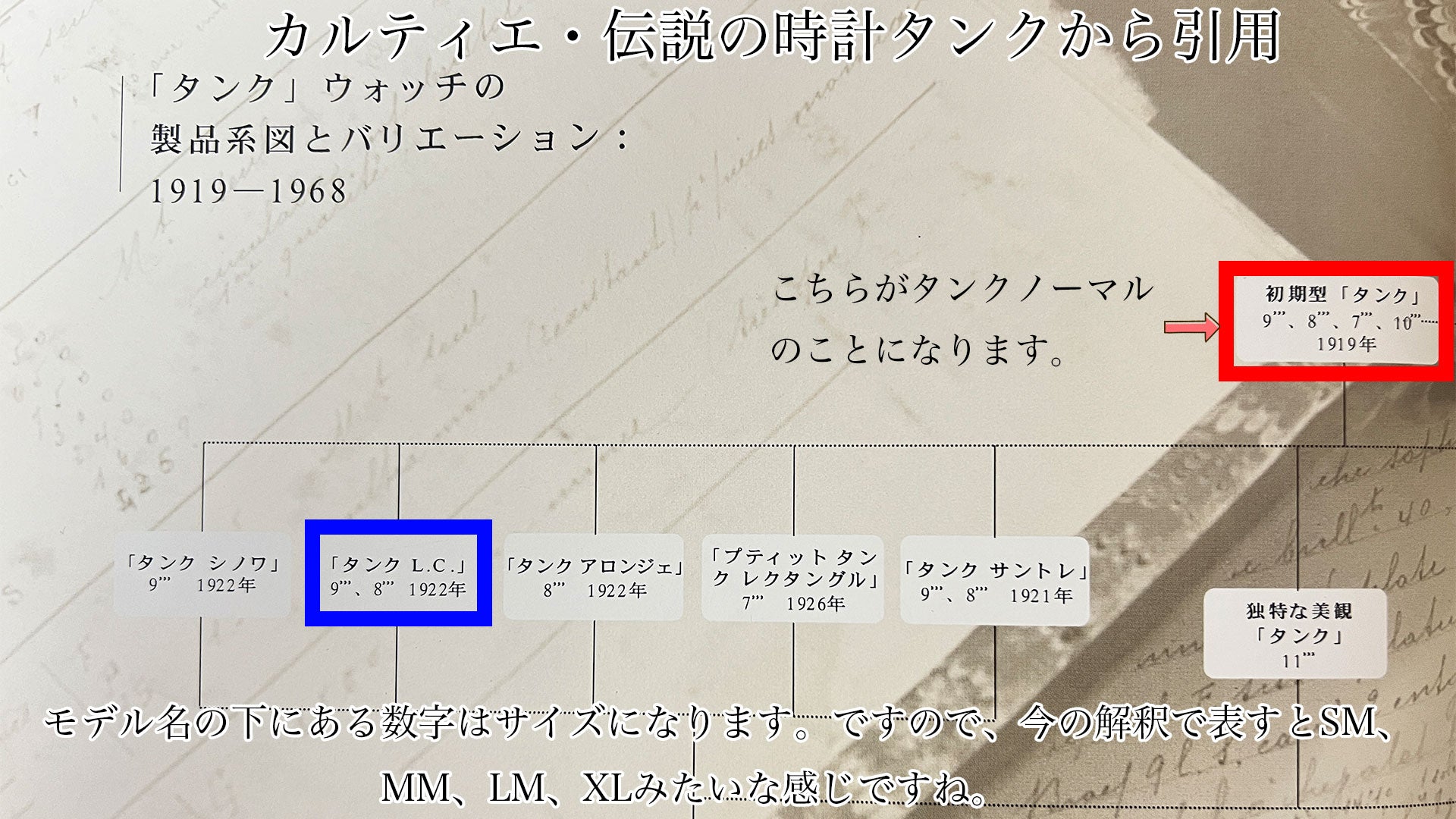
This was the first time that the Tank Louis Cartier was born, and what was distinctive about this model was its rectangular case shape with rounded edges.
And, although it is not possible to pinpoint a specific decade, as the Tank Louis Cartier design became more popular than the Tank Normale, the Tank Louis Cartier came to be recognized as the pinnacle of Cartier's model.
Tank Louis Cartier from the 1920s to the 1970s
First of all, the distinctive feature of Tank Louis watches from the 1920s to 1970s is that they are equipped with movements made by Jaeger-LeCoultre.
Jaeger-LeCoultre is a long-established manufacture brand that has provided movements to Patek Philippe and Audemars Piguet, but it is Cartier with which it has had the longest standing connection.
It all began in 1907 when Edmond Jaeger developed a movement for an ultra-thin watch and asked LeCoultre to put it into practice.
When they brought the ultra-thin movement they had created to Cartier, the company was so pleased with it that they placed a large order for the movement.
At the time, Cartier's watchmaking technology was still immature, so the most ideal approach for them was to design and make the cases in-house and outsource the movements.
Moreover, the movement was ultra-thin, allowing the watch to be made thinner, which was a good fit with Cartier's philosophy, and at this time Jaguar signed a contract to continue using movements manufactured by LeCoultre for 15 years.
However, in reality, it was not 15 years, and when the contract was due to expire it was extended, so the relationship actually continued into the 1970s.
For more details, please watch this video on deployant buckles.
Now let's look at the actual watch.
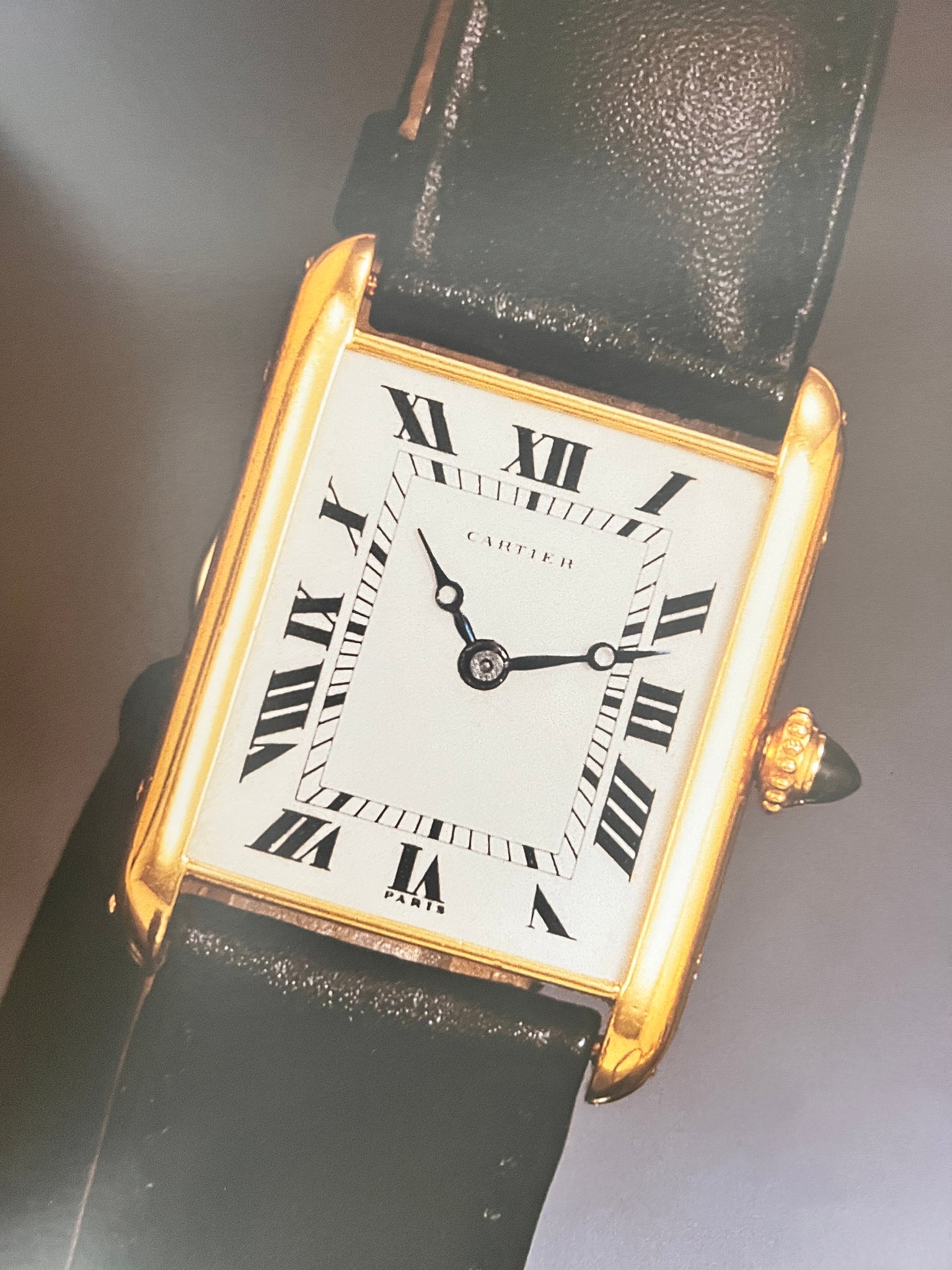
*Tank Louis Cartier made in 1925
This photo is taken from "Cartier's Legendary Watch: Tank." The first model's distinctive features are Breguet hands and the country of manufacture "PARIS" at the 6 o'clock position.
However, depending on the era, there are various types, such as those with sword hands and those without the Paris marking, so please understand that they are all one model.
The movement used at this time was the Jaeger-LeCoultre Cal. 838.

Then in the 1960s, the Tank Louis Cartier Extra Flat, a model derived from the Tank Louis Cartier, was born.
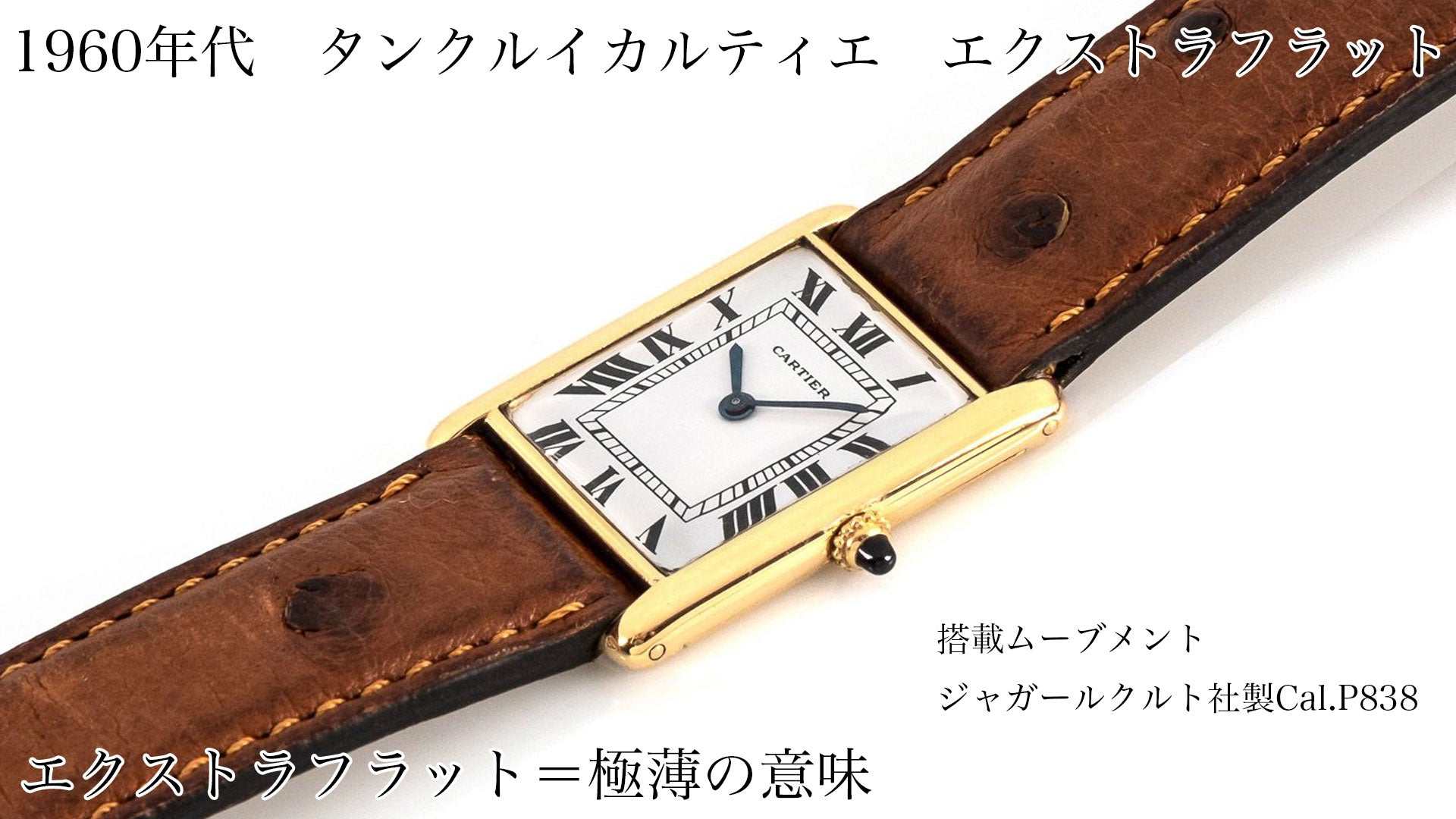
This term is also used by Piaget and Audemars Piguet, so any watch enthusiast will immediately recognize that extra-flat means "extremely thin."
Because the watch is so thin, the movements are inevitably thin as well, and the Extra Flat is characterized by being equipped with the thinnest movements of each era.
The movement that was fitted in the 1960s was the Jaeger-LeCoultre caliber P838, and when viewed from the side, you can see that it was made to be quite thin.
This concludes our explanation of the Tank Louis Cartier up until the 1970s.
The Louis Cartier Collection since 1973
Let's take a look at the Tank Louis Cartier, which has been available since 1973.
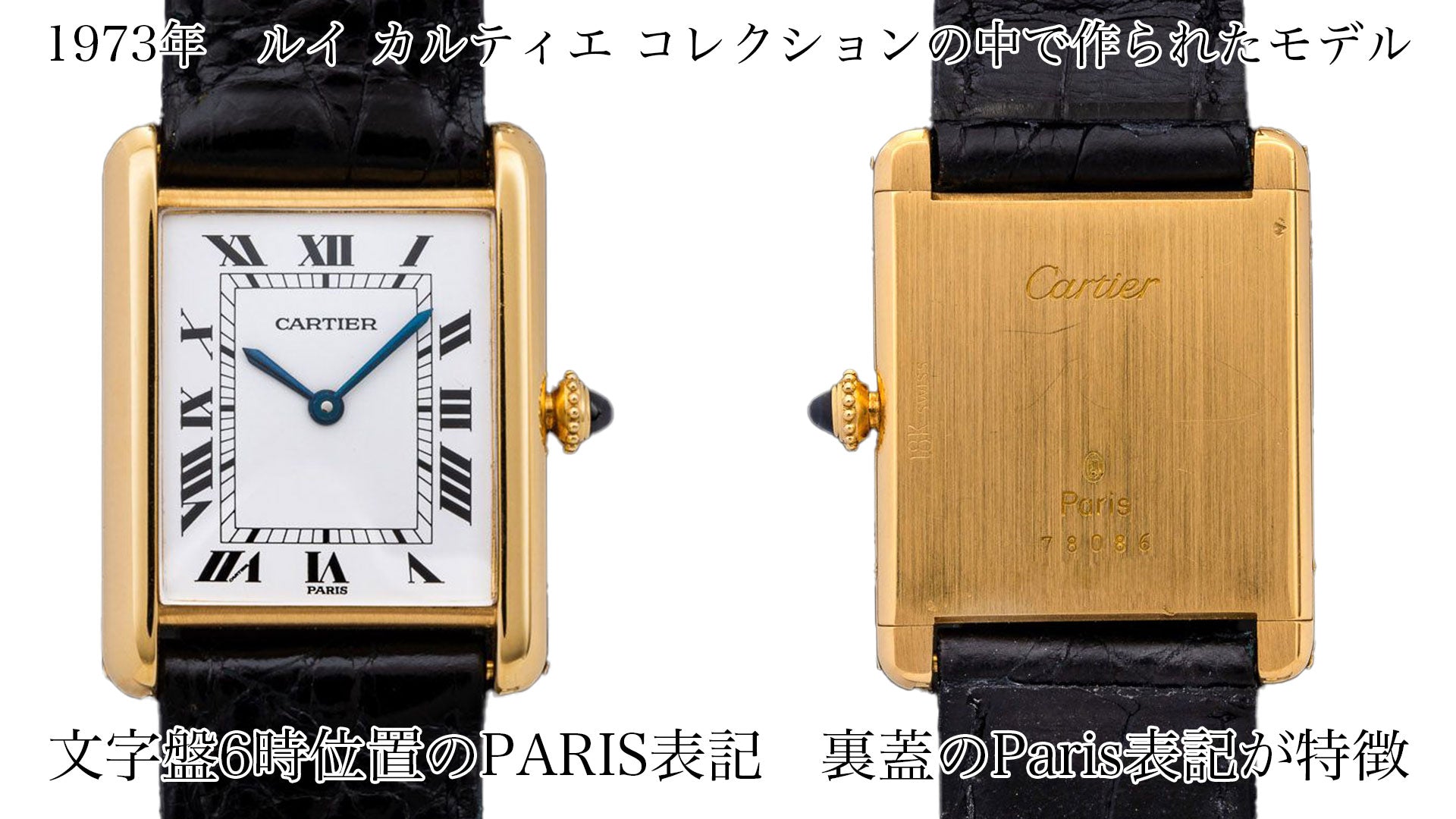
In 1973, the company decided to reproduce 12 classic models designed by Louis Cartier, the third president of the company, and to produce a limited number of hand-wound models for both men and women.
The dials of the 12 models have the country of manufacture marked at the 6 o'clock position as follows: A notable feature of the collection is that it is based on the theme of ` `Paris ,'' and it includes the Tank Louis Cartier.
The Tank Louis Cartier with PARIS markings is Ref. 78086 for men and Ref. The number is 78087.
PARIS was chosen because Cartier had a workshop in Paris when it was first founded, and the watch was designed at that time. It's written as PARIS .
In the 1970s, ETA began to supply movements for these watches.
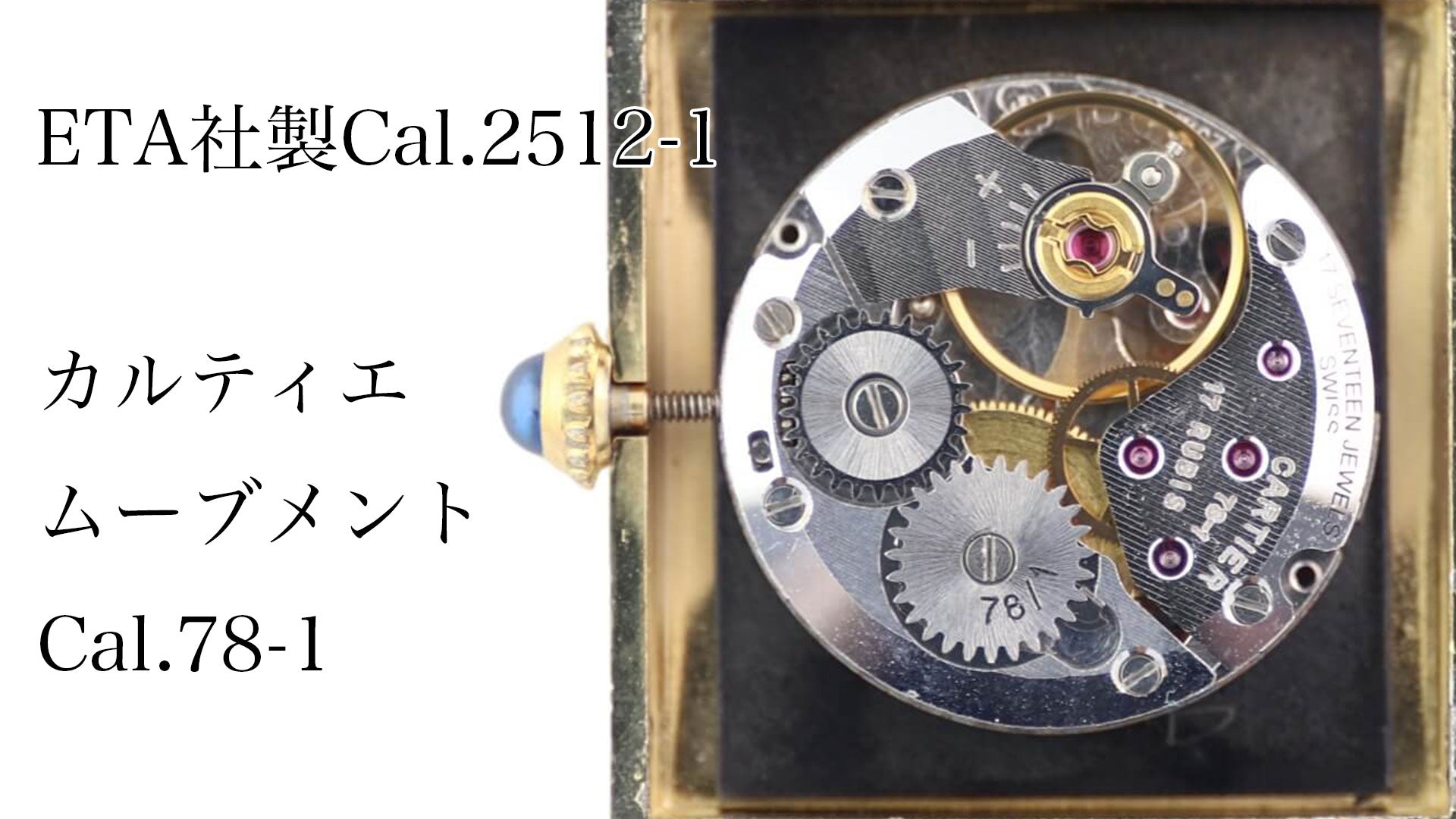
The company that specializes in making movements is ETA, which still exists today and is part of the Swatch Group.
From around 1970, rising labor costs led to an increase in the price of movements, and with the rise of generic movement manufacturers such as ETA, Cartier began to adopt ETA's movements.
For more information on the Louis Cartier collection, please watch this video:
Now let's take a look at the extra flats from the 70s.

The extra-flat model was not included in the 12 models, but it appears to have been added later, and was made during the Louis Cartier collection.
The watch itself is ultra-thin, measuring just 4mm thick.
What's particularly noteworthy about this Extra Flat is that it is equipped with a movement manufactured by Frédéric Piguet.
How great are Frédéric Piguet movements?
Frederic Piguet is a company that is only known to a few people, and I don't think it is very well known in Japan, so I will give a brief explanation about it.
Currently, it is incorporated into Blancpain's exclusive movement brand within the Swatch Group, but it has a long history, having been founded in Switzerland in 1858 by Louis-Elise Piguet.
Due to their advanced technology, the company was known for their reliability and supplied movements to the big three of Patek Philippe, Vacheron Constantin, and Audemars Piguet, as well as Breguet and Panerai.
Frederic Piguet movements are characterised by high precision and durability.
The company employs precision processing techniques and strict quality control in the manufacture of its movements.
For this reason, watches equipped with Frederic Piguet movements are said to operate with stable accuracy for a long period of time.
This concludes our explanation of the Tank Louis Cartier from the 1970s.
Tank Louis Cartier from the 80s
In the 1980s, the Tank Louis Cartier hand-wound model remained, but quartz and automatic versions were added.
Let's take a look at the actual watch.
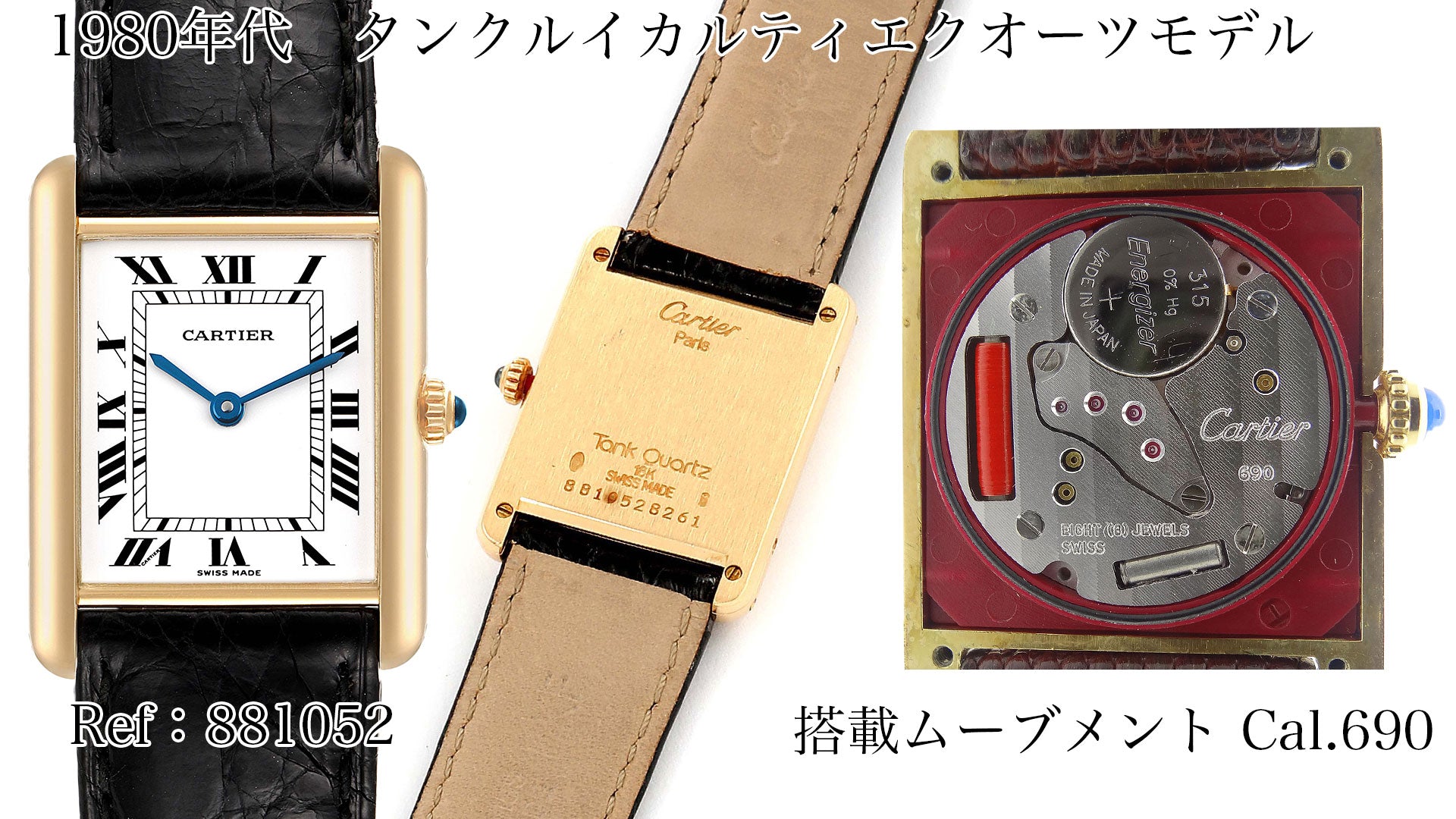
The distinctive features of the quartz model, Ref. 881052, are that it has "SWISS" written at the 6 o'clock position, and that the crown is not bullet-shaped but has a shallow sapphire like the Mast series.
Let's take a look at the second automatic version.
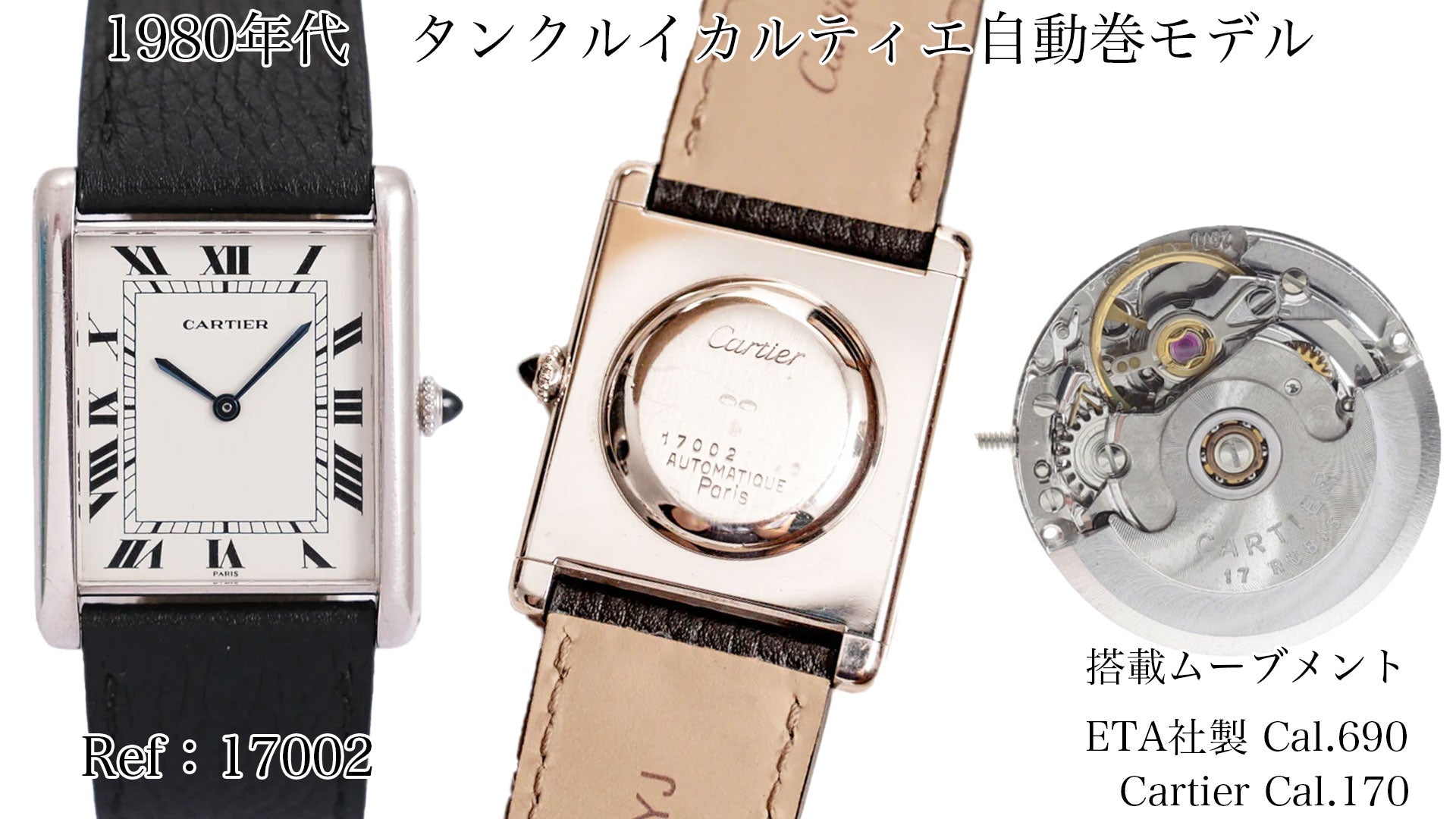
The product in the image is the 18K white gold model, but a yellow gold version is also available.
What's special about this automatic model is that it was available in an XL size.
Size At 28mm x 34mm, it is quite large even among the Tank Louis series .
It is likely that they did not develop the XL size because they wanted to make one, but rather because the size would inevitably become larger if an automatic movement were installed.
The characteristic of the XL-sized automatic model is that the movement is so thick that it cannot fit into the case, so it is mounted on a bulge in the back cover.
It looks like a Rolex Bubbleback.
However, since it is a watch designed by Cartier, even though it has a bulge, it does not feel strange at all and is a wonderful model that fits comfortably on the wrist.
The extra-flat model continued to be sold without any major changes, equipped with the Piguet movement.
Tank Louis Cartier from the 90s
In the 1990s, a luxury collection for men called CPCP was born for hand-wound models, and the quartz models evolved further, with models with date display and small seconds on the dial, as well as moon phase models, being born.
Now let's look at the actual watch.
Standard model Ref. 81068
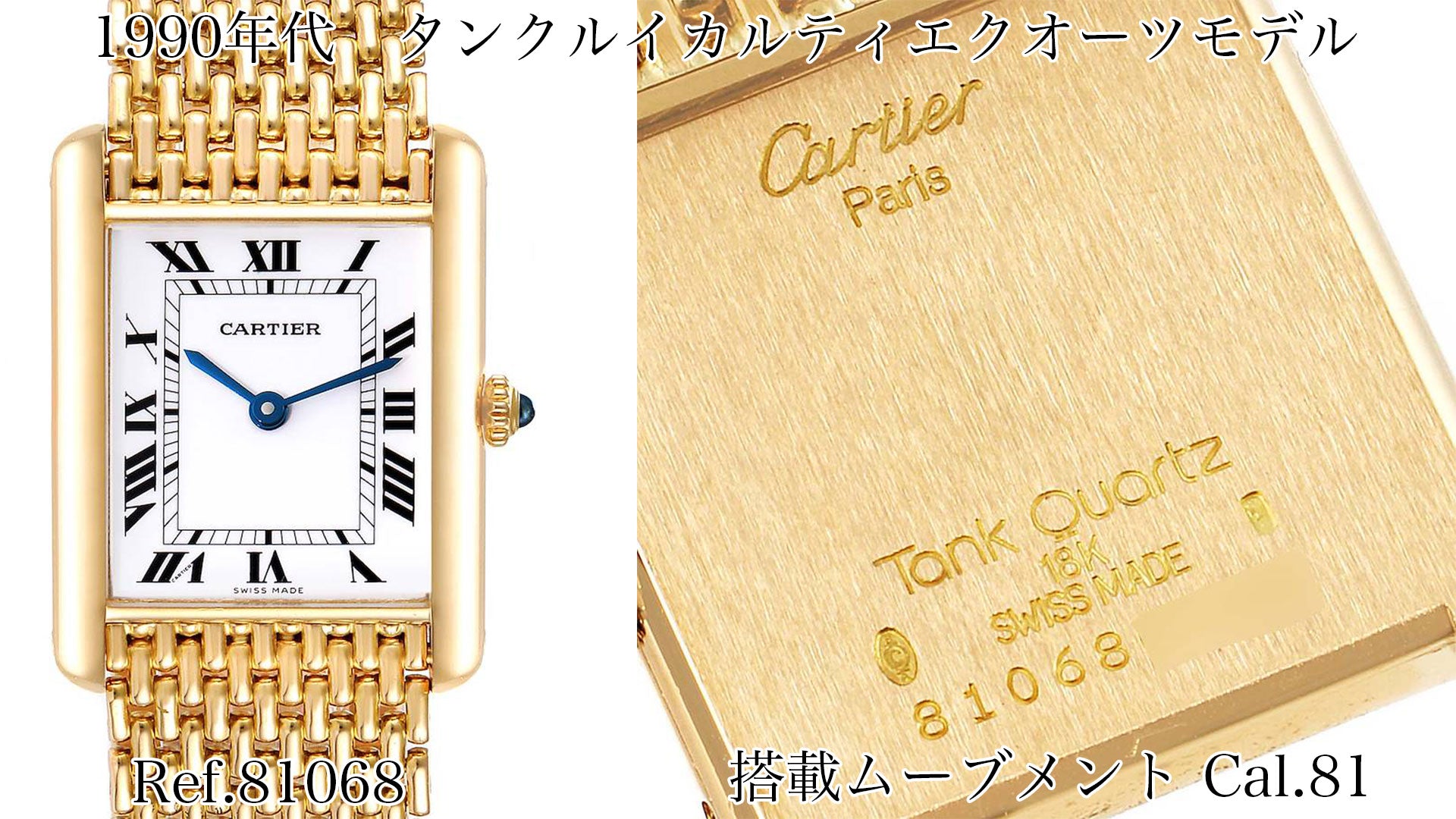
The design of the standard model remains unchanged, but the movement has been replaced with CAl.81.
Date & Small Seconds Model Ref. 8110

The dial features a date and small seconds set, something that is only seen in this era.
The Tank Louis is a watch designed to pursue simplicity, but it is the perfection of quartz technology that has allowed it to be equipped with these two features, which would normally be impossible to achieve.
That said, it is Cartier after all, so it is elegantly put together.
And because it is a design that can only be seen in this era, it can be said to be rare.
Moon Phase Model Ref. 81900
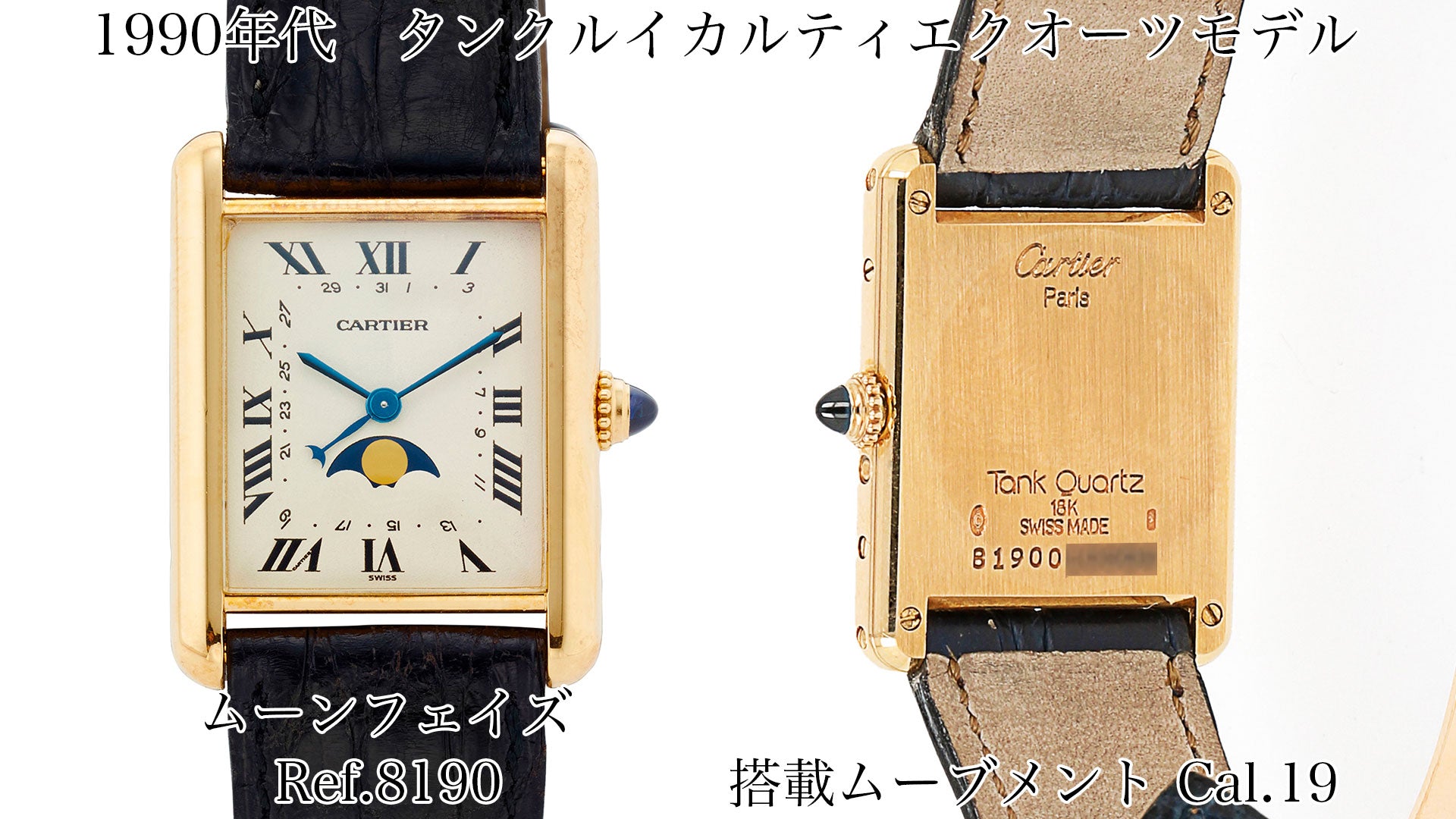
It's rare to see moon phase designs from other watch brands, but at that time most watch brands had moon phase models in their lineup, and moon phase watches were recognized as stylish watches.
Now let's take a look at the CPCP collection, which began in 1998.
Tank Louis Cartier from the 2000s CPCP Collection
The CPCP collection is an abbreviation for Collection Privée Cartier Paris, which means that it is a collection that revives Cartier's previous models, reexamines the materials, and creates masterpieces.
This continued from 1998 to 2009.
This is a collection that was produced in limited quantities each year, but since all of the watches are mechanical and some models were produced in limited numbers, it has become an extremely rare collection.
Therefore, it is a male-only model.
From Tank Louis, the Extra Flat has been released twice from the CPCP collection.
For more information about CPCP, please watch this video:
Now let's look at the actual watch.

The characteristics of watches made by CPCP are the guilloche engraving on the dial and the PARIS logo underneath the CARTIER logo.
CPCP production continued for nearly 10 years, but there are early and late models of the Tank Louis series, and the model above is the early model.
This time it was produced in yellow gold, and this time in platinum, but the platinum version is much rarer, said to be less than 150 pieces.
The movement was still the Cal. 21 made by Frederic Piguet, but the previous Cotes de Genève decoration was replaced with Cartier's double C decoration, and the movement became much more elaborate.
Now let's look at the later model.
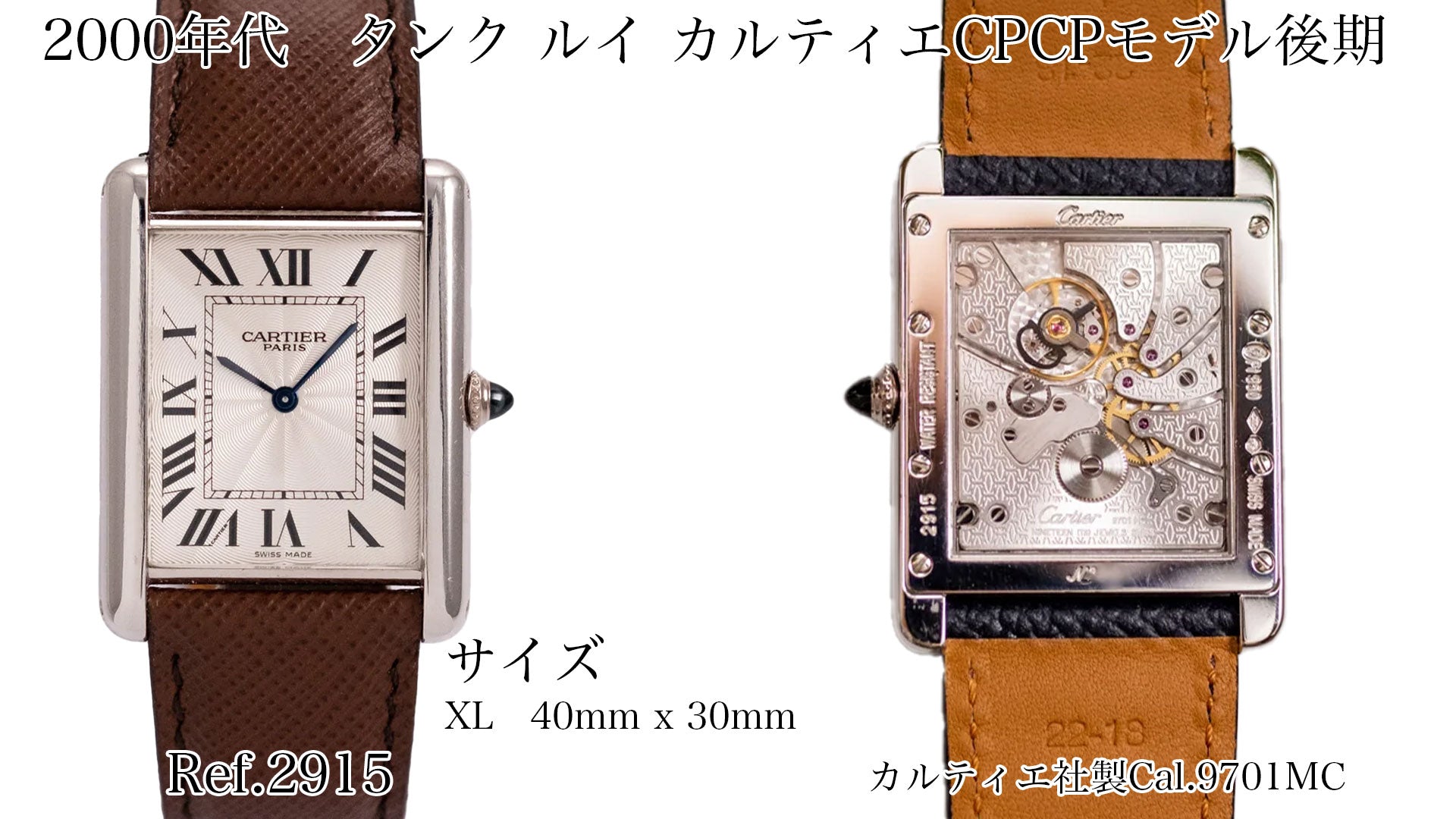
At first glance, there is little difference from the previous model, but the dial features a rose decoration in the center and guilloche engraving radiating from it.
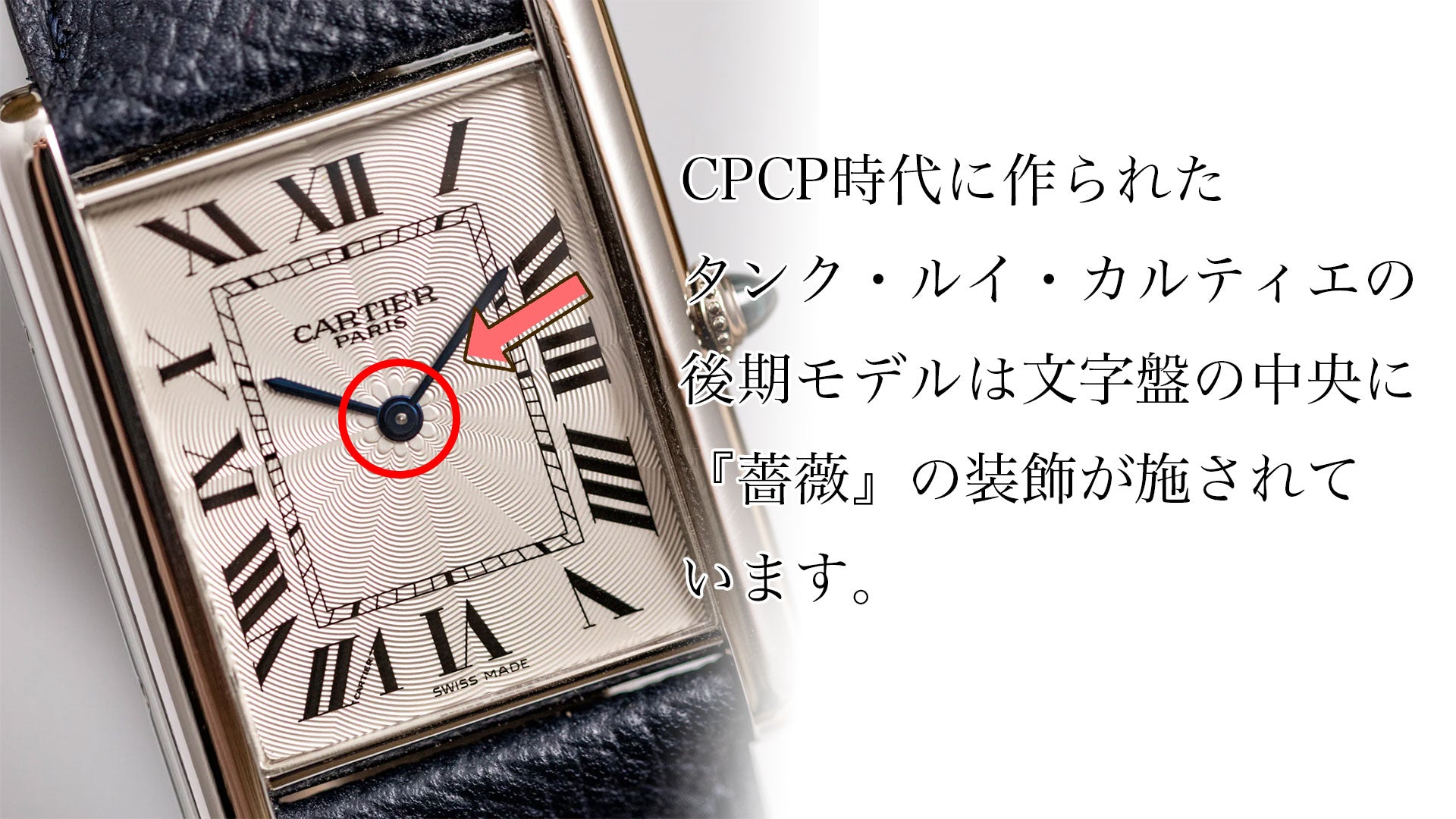
In addition, the back side is skeletonized so that the decoration of the movement can be seen, allowing you to appreciate the mechanical beauty of the watch.
The size has increased and is now available in XL size.
At the time, big, thick watches from Panerai and Hublot were becoming popular, and Cartier's classic watches were not getting much attention.
As a result, in response to market needs, the Tank Louis was made in XL size, and the Santos 100 was born from the Santos series.
The movement is equipped with Cartier's Cal. 9701MC, but in fact it is not completely made by Cartier, as the technology and manufacturing are provided by companies under the Richemont Group that specialize in thin movements, such as Jaeger-LeCoultre and Piaget.
The regular lineup now includes quartz models, and the small seconds that were on the previous model have been eliminated, replaced with a simple design that only displays the date.
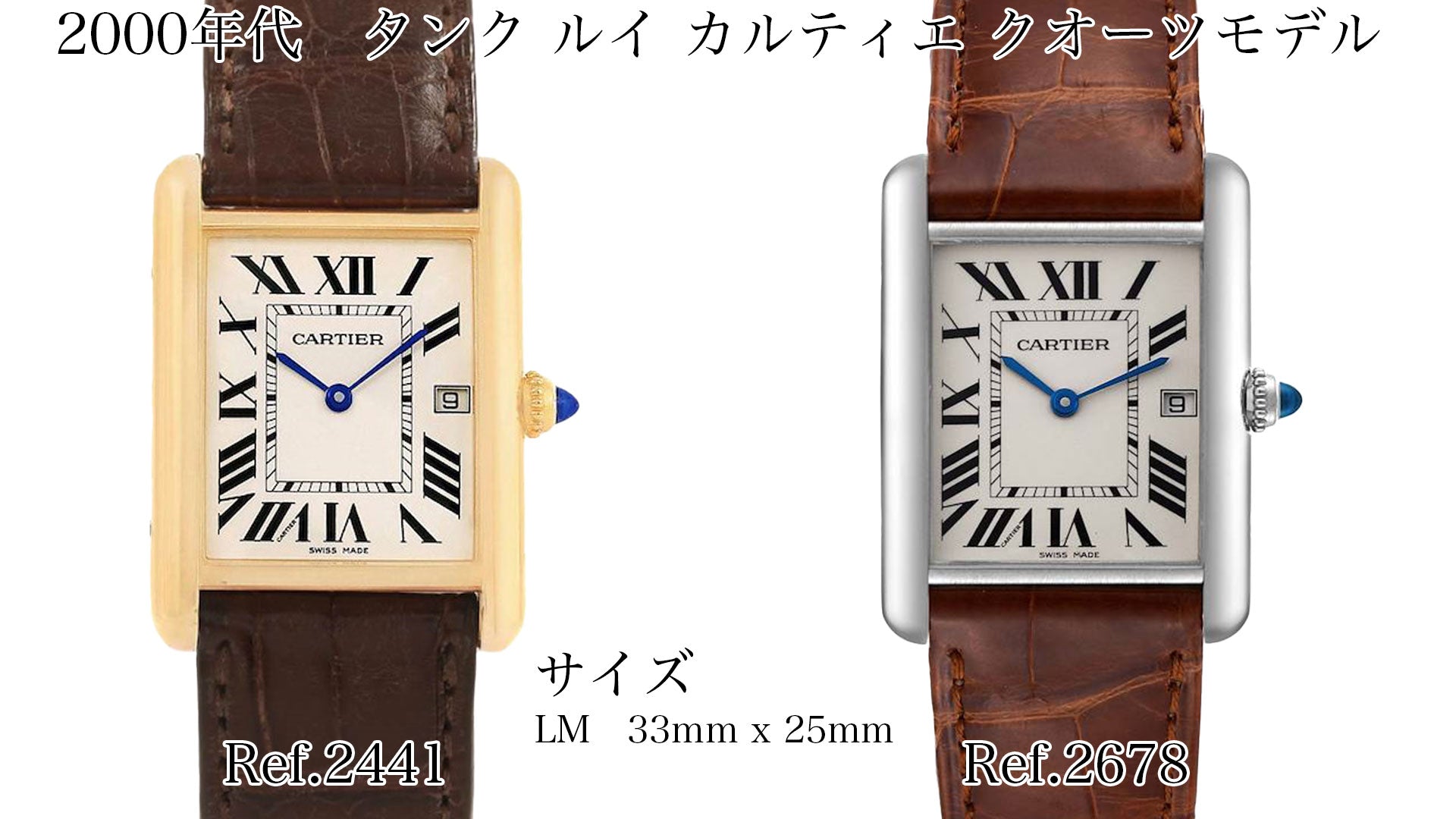
This model will continue until 2017, when production of this model will end and it will be replaced by the current line that we see today.
After the CPCP ended, a line called Haute Horlogerie was developed that focused on movements, allowing Cartier to make their own movements.
Later, the Tank Louis Cartier was also equipped with an in-house movement, which led to the current model.
Tank Louis Cartier from the 2010s to the Present
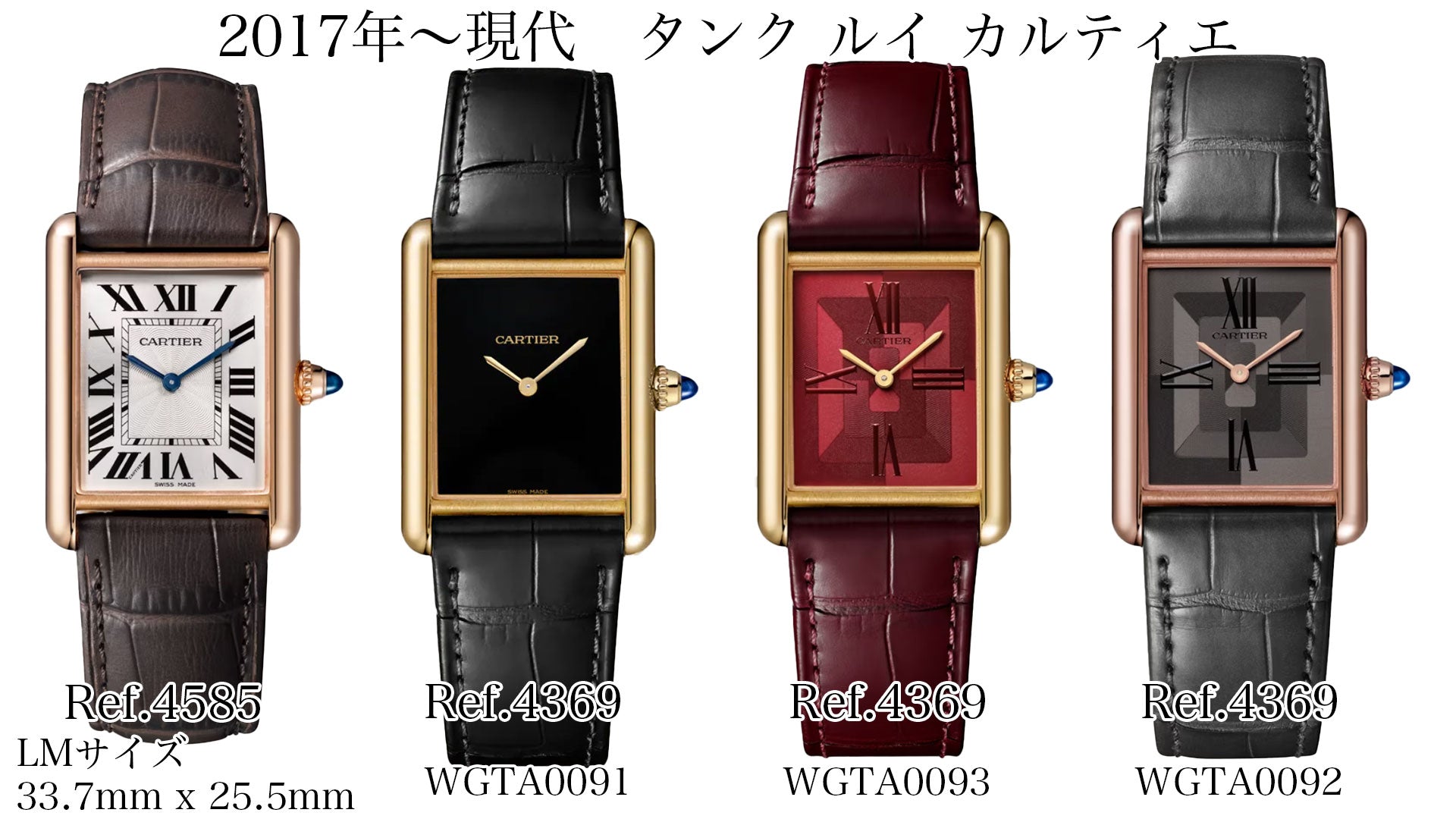
This model can still be seen on Cartier's official website, and in my opinion it is faithful to the basics and a return to classics, but the design seems to offer more options thanks to the increased color variations.
The Tank Louis Cartier's classic, simple two-hand design makes it obvious that this watch is a Cartier, and the intricately crafted dial gives it a luxurious feel.
It's a model with a gray and red dial, and the design follows Art Deco style, which I think goes very well with the rectangular case.
summary
To sum up, when looking at all the previous Tank Louis Cartier watches, there are subtle differences that you won't notice unless you look closely.
With every model, it is clear that they incorporate the trends of the time and strive to meet the needs of their customers.
Due to the nature of the Tank Louis Cartier model, the pursuit of thinness and lightness has always been a common theme. It is very intricately made.
The Tank Louis Cartier is made using only the finest materials, and perhaps it is a state of mind that can only be reached by those who can find beauty in simplicity.








